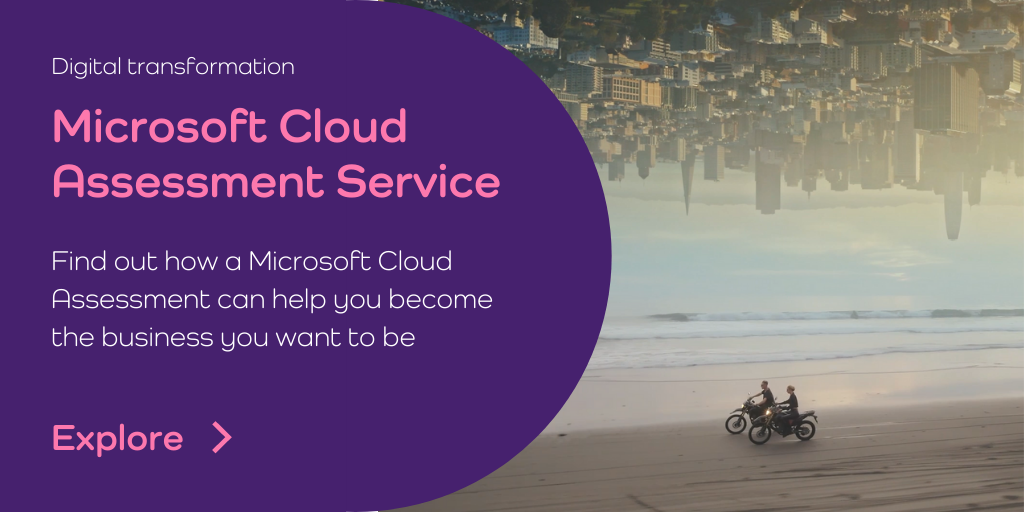The benefits of cloud migration are well documented. UK cloud spending rates are set to rise 2.8% from 2019 to 2022, with 11.5% of IT spending being for cloud services by 2022, as more organisations reap the productivity, agility and financial benefits of cloud migration.
However, cloud migration is not without its pitfalls. Not all cloud deployments deliver the benefits promised. A 2019 study by IHS Markit, for our security partner Fortinet, found that the majority of organisations have moved a cloud-based app back on-premises because it didn’t deliver the ROI expected.
As part of our new #getITrightfirsttime blog series, below we share cloud migration tips from the Cloud Business team, to help you avoid the pitfalls and get the benefit of the cloud.
7 cloud migration tips for IT project leaders
- Spend time on discovery and planning

In our experience the discovery and planning process can be directly linked to the success or failure of a cloud migration project. Take the time to audit the existing IT environment, analyse what’s on-premise, already in the cloud and how it joins together. Also spend time identifying the right Cloud Solutions Provider to partner with. We’re not all the same! So make sure you’ve got a good fit and they really understand what a successful cloud migration looks like for your organisation.
Then invest time in planning and ensuring you have a clear roadmap before taking the next step. In many cases the discovery and planning stage takes longer than the actual cloud migration. That’s the way it should be – if you get the right foundations in place at this stage, your cloud migration should go smoothly.
Booking a cloud assessment workshop with a CSP like Cloud Business is a good way to kick off discovery and planning. Find out more here >>>
- Don’t migrate it all in one go

Moving all your workloads to the cloud in one go is not a good idea. To start with there may be some workloads that are best kept on-premise, for example for compliance or data protection reasons. You should also factor in the cost of migrating some workloads to the cloud, especially if they’re not heavily used. To see ROI from cloud migration you need users to be using cloud applications.
Another reason not to migrate it all in one go, is that it’s too disruptive. Much better to migrate in phases by initially moving some apps to the cloud, getting user adoption and building on these successes.
- Get senior level buy in

It’s essential that your organisation’s senior leadership team buy into the cloud migration project. You need their support to ensure you have sufficient resource, and you need their support to get user adoption. Digital transformation is not just about migrating to cloud services, it’s also a cultural transformation. If senior leaders don’t get it, it will be an uphill battle to get user adoption and be able to demonstrate ROI.
For more advice on getting senior level buy in, read our blog post – How to get buy in for cloud migration.
- Don’t enable it all at once

As with ‘Don’t migrate all in one go’, phase deployment. Enabling all apps at the same time could overwhelm your organisation in several ways. To start with, from a technical perspective a phased deployment will allow you to troubleshoot any issues and resolve them systematically. From a users’ perspective, a gradual deployment will allow them to explore the functionality of different apps and get up to speed with new ways of working before introducing another change. From a support perspective, your service desk should not be overwhelmed with tickets – although you should prepare for a spike as new apps are rolled out.
- Run a pilot

A pilot scheme is an excellent way of testing whether the migration delivers the expected outcomes. Insights from the pilot migration will also inform your actual migration, making for a smoother and more successful deployment.
To do this you’ll need to set up a test environment and select a group of end users to test the cloud applications and provide feedback. Your pilot migration should tell you:
- What resources and capacity the application requires
- Your cloud vendor’s capabilities and limitations
- Optimal configurations (settings, security controls, replacement of legacy firewalls, etc.)
- The best migration processes for your organisation
- Cost-baseline for what the deployment will cost in the cloud
- Don’t skimp on upskilling and training

To get the expected outcomes from a cloud migration project, you need user adoption. Without training, support and good communications, users will struggle to get the benefits of the cloud and you’ll struggle to prove ROI.
Communications should start early and really market the cloud migration to users. Get support from HR and Internal Comms to help you engage users, identify Cloud Champions within departments and design a change adoption programme.
Also identify the best training methods for different users. Online training in the form of e-learning modules are popular, but don’t discount blended learning (real-time virtual training) or traditional classroom instruction.
Make sure you also have enough technical support available – it is likely you will experience a spike in tickets following a migration. While cloud technology companies like Microsoft provide excellent self-serve support, users need to know how to access this. If you use Managed Support Services, work with your provider to ensure you have sufficient capacity during and following deployment.
- Ensure the on-premise network can support cloud workloads and apps

Your cloud migration’s success depends on your network infrastructure. It’s what end users rely on to access cloud workloads; and the performance of the network impacts the performance of cloud applications.
As technology evolves and your organisation grows, more devices need to connect to your network and users want more apps and functionality, your network will need to evolve too. It’s essential that you’re building on solid foundations that can also scale on demand.
Our Cloud Assessment can help you understand whether your network is robust enough to deliver a successful cloud migration project, and how to ensure it’s fit for purpose. For a discovery call and to find out more about our Microsoft Cloud Assessment workshop click here >







